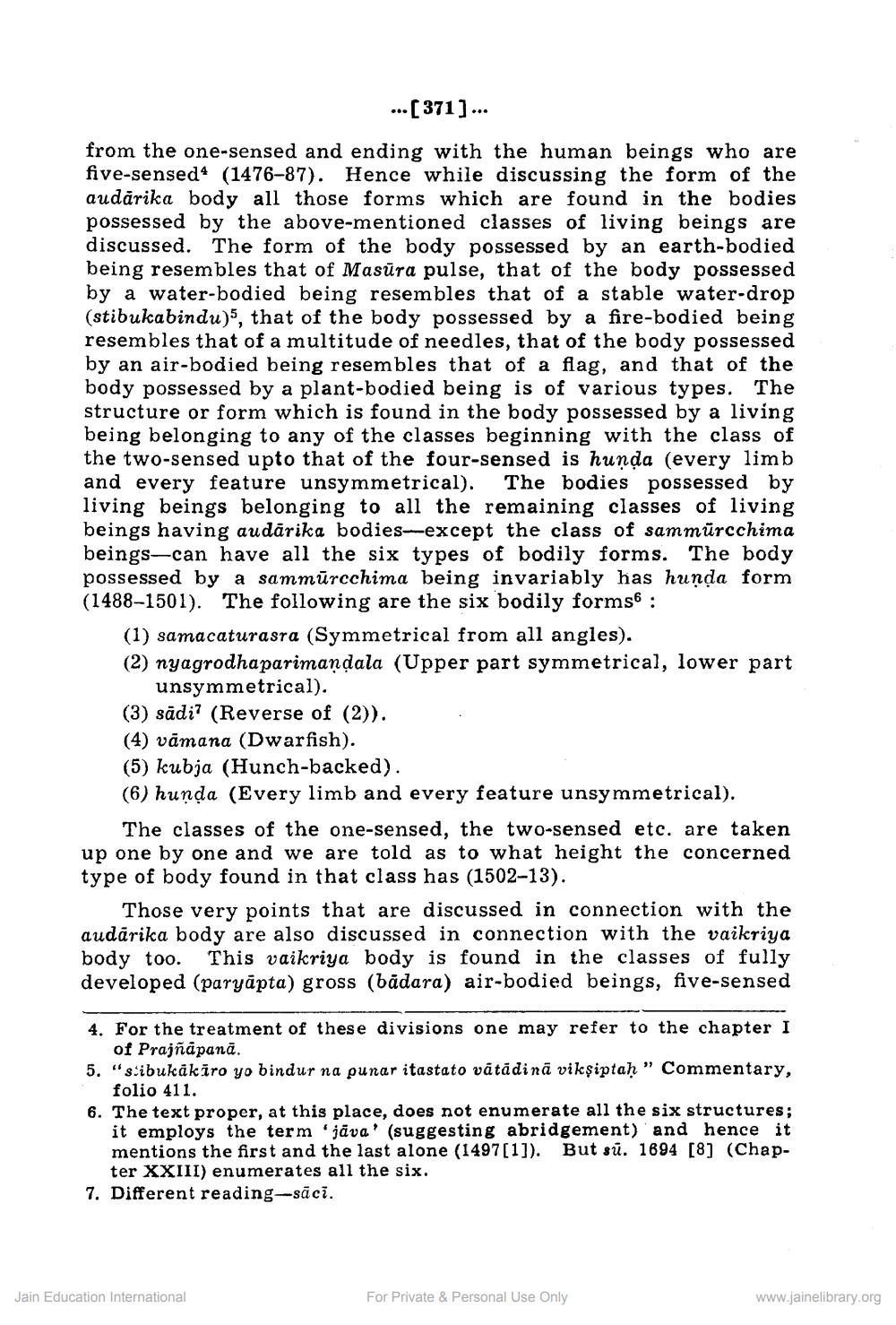________________
... (371) ...
from the one-sensed and ending with the human beings who are five-sensedo (1476-87). Hence while discussing the form of the audărika body all those forms which are found in the bodies possessed by the above-mentioned classes of living beings are discussed. The form of the body possessed by an earth-bodied being resembles that of Masūra pulse, that of the body possessed by a water-bodied being resembles that of a stable water-drop (stibukabindu)5, that of the body possessed by a fire-bodied being resembles that of a multitude of needles, that of the body possessed by an air-bodied being resembles that of a flag, and that of the body possessed by a plant-bodied being is of various types. The structure or form which is found in the body possessed by a living being belonging to any of the classes beginning with the class of the two-sensed upto that of the four-sensed is hunda (every limb and every feature unsymmetrical). The bodies possessed by living beings belonging to all the remaining classes of living beings having audārika bodies-except the class of sammūrochima beings-can have all the six types of bodily forms. The body possessed by a sammūrochima being invariably has hunda form (1488-1501). The following are the six bodily formse :
(1) samacaturasra (Symmetrical from all angles). (2) nyagrodhaparimandala (Upper part symmetrical, lower part
unsymmetrical). (3) sādi? (Reverse of (2)). (4) vamana (Dwarfish). (5) kubja (Hunch-backed). (6) hunda (Every limb and every feature unsymmetrical).
The classes of the one-sensed, the two-sensed etc. are taken up one by one and we are told as to what height the concerned type of body found in that class has (1502-13).
Those very points that are discussed in connection with the audārika body are also discussed in connection with the vaikriya body too. This vaikriya body is found in the classes of fully developed (paryāpta) gross (bådara) air-bodied beings, five-sensed
4. For the treatment of these divisions one may refer to the chapter I
of Prajĩapanỹ. 5. "s:ibukakiro yo bindur na punar itastato vātādinā viksiptaḥ " Commentary,
folio 411. 6. The text proper, at this place, does not enumerate all the six structures;
it employs the term 'java' (suggesting abridgement) and hence it mentions the first and the last alone (1497[1]). But sū. 1694 [8] (Chap
ter XXIII) enumerates all the six. 7. Different reading--sāci.
Jain Education International
For Private & Personal Use Only
www.jainelibrary.org




